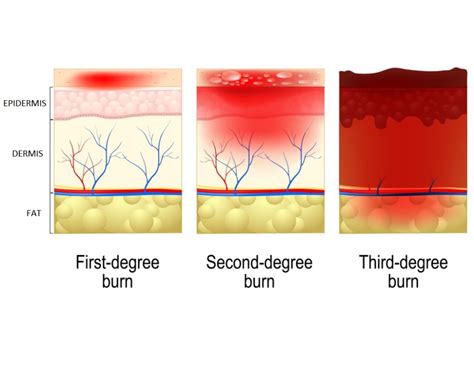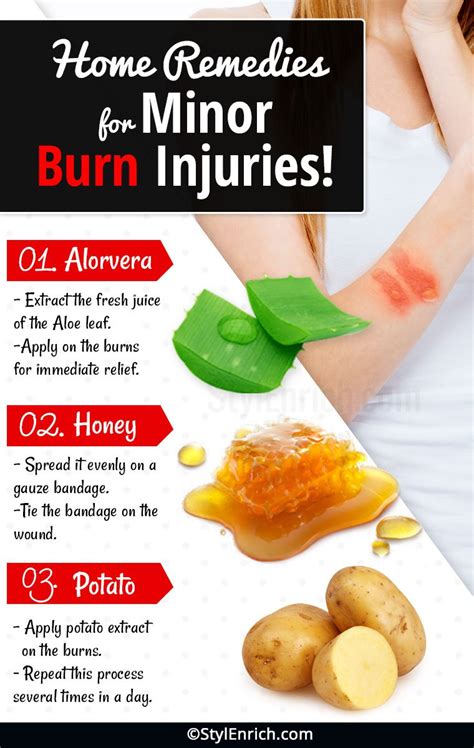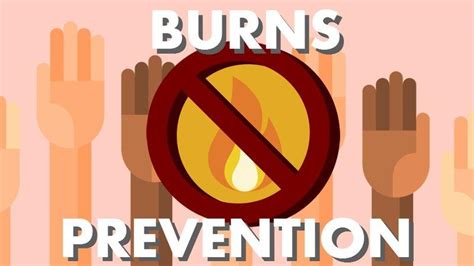Intro
Heal burnt skin quickly with effective remedies, soothing treatments, and natural burn relief methods to reduce pain and scarring, promoting fast recovery from burns.
Burns can be painful and unsettling, affecting not just the skin but also our overall well-being. Whether it's a minor scald from a hot cup of coffee or a more severe burn from an accident, the goal is always to cure burnt skin as quickly and safely as possible. The journey to healing involves understanding the different types of burns, the immediate actions to take when a burn occurs, and the various treatments and home remedies that can aid in the recovery process.
The importance of treating burns correctly cannot be overstated. Improper care can lead to infections, which can significantly prolong the healing time and even lead to more severe health issues. Moreover, the psychological impact of burns, especially those that leave scars, should not be underestimated. Thus, finding the right approach to cure burnt skin fast involves a combination of medical knowledge, natural remedies, and psychological support.
Burns are classified into different types based on their severity: first-degree, second-degree, and third-degree burns. First-degree burns affect only the outer layer of the skin and are the least severe. They can be treated with basic first aid and home remedies. Second-degree burns, also known as partial thickness burns, affect both the outer and underlying layer of skin, causing blisters and potentially requiring medical attention. Third-degree burns, or full thickness burns, are the most severe, extending through all layers of the skin and potentially damaging the underlying tissues, which always requires immediate medical care.
Understanding Burn Injuries

To cure burnt skin fast, it's essential to understand the nature of the injury. Each type of burn has its unique characteristics and requires a specific approach to treatment. For first-degree burns, cooling the burn with cool water, applying topical creams, and protecting the area from further injury are key steps. Second-degree burns may require similar care but often need more attention to prevent infection and promote healing of the damaged skin. Third-degree burns, due to their severity, necessitate immediate professional medical intervention.
Immediate Care for Burns
Immediate care for burns involves several critical steps that can significantly influence the healing process. The first step is to stop the burning process by removing the source of the heat. Then, the affected area should be cooled with cool (not cold) water to reduce the temperature of the skin and ease the pain. It's crucial to avoid using ice or ice water, as this can cause further damage. After cooling, the burn should be covered with a non-stick dressing or a clean cloth to protect it from further irritation and infection.Treatments for Burned Skin

There are various treatments and home remedies that can help cure burnt skin. Topical creams and gels, such as those containing aloe vera or silver, can promote healing and prevent infection. In some cases, especially for second and third-degree burns, medical interventions like debridement (the removal of dead skin) or skin grafts may be necessary. Additionally, pain management is a critical component of burn care, as the pain can be intense and debilitating.
Home Remedies for Burns
Several home remedies can complement medical treatment and aid in the healing process. Aloe vera gel, known for its soothing and anti-inflammatory properties, is often recommended for minor burns. Honey, with its antibacterial properties, can help prevent infection and promote healing. Coconut oil and vitamin E oil are also used for their moisturizing and antioxidant properties, which can help in the skin regeneration process.Natural Remedies for Burn Scars

For those dealing with burn scars, there are natural remedies that can help reduce their appearance. Silicone gel or sheeting, applied directly to the scar, can help flatten and soften the scar tissue. Massaging the area with oils like coconut, olive, or jojoba oil can also help break down the scar tissue, making the scar less noticeable. Furthermore, protecting the skin from the sun is crucial, as sun exposure can darken the scar and make it more pronounced.
Psychological Support for Burn Victims
The psychological impact of burns should not be overlooked. Burn victims often experience anxiety, depression, and issues related to body image, especially if the burns have resulted in noticeable scars. Support from family, friends, and professional counselors can play a significant role in the recovery process. Joining support groups, where individuals can share their experiences and connect with others who have gone through similar ordeals, can also be incredibly beneficial.Preventing Burns

Prevention is always the best approach when it comes to burns. Simple precautions like being mindful in the kitchen, keeping flammable materials away from heat sources, and ensuring that electrical appliances are used safely can significantly reduce the risk of burns. For parents, childproofing the home, especially the kitchen and bathroom, is essential to prevent accidental burns.
Lifestyle Changes for Burn Recovery
During the recovery process, making certain lifestyle changes can aid in healing and prevent further complications. Maintaining a balanced diet rich in vitamins and minerals, especially vitamin C and zinc, which are crucial for wound healing, is important. Staying hydrated by drinking plenty of water helps keep the skin moist and promotes the healing process. Avoiding smoking and limiting alcohol consumption can also support the body's natural healing processes.Advanced Treatments for Severe Burns

For severe burns, advanced medical treatments may be necessary. These can include surgical interventions like skin grafts, where healthy skin is transferred to the burned area, or the use of specialized dressings and topical treatments designed to promote healing and prevent infection. In some cases, patients may be treated in a burn unit, where a multidisciplinary team of healthcare professionals provides comprehensive care.
Future Directions in Burn Care
Research into burn care is ongoing, with scientists and medical professionals exploring new treatments and technologies to improve healing outcomes and reduce the risk of complications. Advances in tissue engineering, stem cell therapy, and the development of new topical treatments hold promise for the future of burn care.Conclusion and Next Steps

Curing burnt skin requires patience, the right treatment approach, and sometimes, professional medical intervention. By understanding the nature of the burn, applying appropriate first aid, and utilizing the right treatments and home remedies, individuals can promote healing and minimize the risk of complications. It's also crucial to address the psychological aspects of burn injuries, ensuring that victims receive the support they need to cope with their experience.
We invite you to share your thoughts and experiences with burns and burn care. Have you or someone you know dealt with a burn injury? What treatments or home remedies were most effective in the healing process? Your insights can help others navigate their journey to recovery. Feel free to comment below, and let's create a supportive community for those affected by burns.
What are the different types of burns?
+Burns are classified into three types based on their severity: first-degree (affecting only the outer layer of the skin), second-degree (affecting both the outer and underlying layer of skin), and third-degree (extending through all layers of the skin and potentially damaging the underlying tissues).
How do I treat a minor burn at home?
+For minor burns, cool the area with cool water, apply a topical cream or gel (such as aloe vera), and cover with a non-stick dressing. Avoid breaking any blisters that form.
When should I seek medical attention for a burn?
+Seek medical attention immediately for third-degree burns, and for second-degree burns if they are large, deep, or if you notice signs of infection (such as increased redness, swelling, or pus). Also, consult a doctor if you're unsure about the severity of the burn or its treatment.
